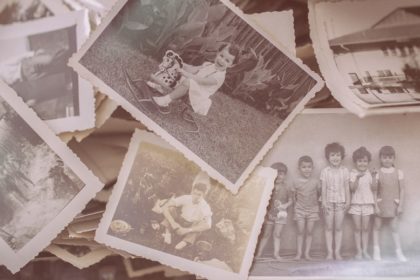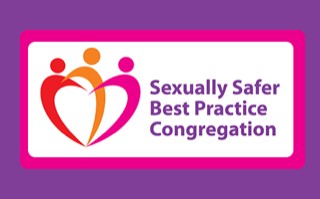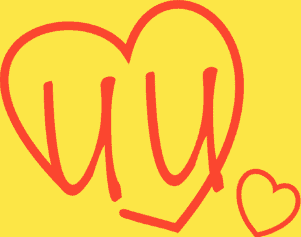Reading by Mark Nepo
I keep returning to the ever-present riddle, […] If trusting the fall, we find our wings.
https://www.huffpost.com/entry/mark-nepo-oprah_b_1220765?ref=healthy-living
Sermon
When I ask my friend, who I’ll call Macy, how she’s doing, she does not respond with the predictable “I’m fine,” she actually tells you. “Well, I’m a little depressed. I’m kinda tired.” She might mention her boss who’s been a jerk, again, that week, but that she just doesn’t have the energy to get her resume together and can’t quite get her job search off the ground.
Macy is someone who does not buy into the “fake it til you make it” philosophy.
Which can be a little disconcerting when you first meet her, but I love her, she has a lot of friends. I think in part because she tells it like it is. When she lets down her guard that way she makes room for others to let down some of theirs.
It’s not for everyone, this “full monty” lack of pretense. But there is something to it.
And as we explore the idea of integrity from the perspective of welcoming all the parts of who you are it was an example that lept to mind.
My friend, with her open, unguarded, unconventional response to a highly conventional question. My friend, who tends to be more open than most when it comes to how she is and who she is.
How do any of us navigate the ground of what we choose or choose not to share with others about how or who we are?
How much do any of us want to see the truth about who or how we are?
There’s this great scene in the movie inside out, in which the main character, aptly named Joy, must find her way out of a giant maze in which she and another character, aptly named Sadness, have accidentally been dumped. The story setup, for those who didn’t see the movie or don’t remember, is that 5 emotions, personified as characters named Anger, Disgust, Fear, Sadness and Joy — grapple for control of the mind of an 11-year-old girl named Riley. Joy acts as a de facto leader, and, thinking Riley should be happy all the time, tries to exile Sadness, keep her away from Riley’s decision-making process, doesn’t want Riley to even see that Sadness in herself.
But as I was saying, there’s this fabulous scene in which Joy, seeking to escape this complex maze in which she finds herself, needs Sadness to help. But Sadness, who reminds me of my friend, a little, is predictably undone by her overwhelming melancholy. Although she wants to help she cannot muster the energy to do anything but lie, exhausted, on the floor. Joy is characteristically undaunted, however and, cheerfully grabbing her by the foot, simply drags Sadness along on their mutual quest. As they head off into the distance you can just catch Sadness saying, her head gently gliding over the tiles – hey, that actually feels kind of good.
I don’t think the movie was making some grand statement in that moment about how when our disparate emotions work together, things go better, might even feel better, maybe even kind of good, but that is, nevertheless, part of the movie’s overall message.
Separating off our feelings, or any part of who we are, tends to be a recipe for less than total happiness. Less than full effectiveness. Carl Jung has said that the more we suppress any part of ourselves, the more, ironically, power it has over us. Leaving us unbalanced. When we finally engage, on the other hand, bring what’s hidden into consciousness, it can, instead, allow us to work with our disparate feelings, even the negative ones, for good.
Which is not to say hidden parts of ourselves are always connected to sadness or something we might consider negative. One of the podcasts in this month’s integrity theme packet was about a woman named Tania who had always seen herself as kind of a tough, edgy, rough, don’t mess with me kind of person. 6 feet tall with a shaved head, she woke up one morning to hear her own self not sleep talking but sleep-giggling. Subsequently recording herself while she slept, she discovered she had a whole other side – one that, as she said, was like a happy, sweet, 4 year old who might like tickle fights, or wearing yellow sundresses.
Tania’s young life had been hard. Just exactly how did it happen that this part got cut off? She didn’t say, maybe she didn’t know. What she did know was that this previously hidden side had something important to offer her. That she wanted that more of her self back.
Being your full self, being authentic, being real. It’s a big thing in our culture.
In fact, it’s not just about having all of yourself, but also having the freedom to show it. Express yourself, be yourself. “You do you,” as they say.
Brene Brown has been beating this drum for years now, be vulnerable, be open, dare greatly, share your truth.
It creates, like with my friend, permission for others to do it too.
It lowers stress. I read somewhere that when our outsides match our insides – it lowers tension levels.
I even read once that when people “tell it like it is,” it boosts life expectancy. Yes. I read somewhere that those who do just let it all hang out, tend to live longer. That same article, soberingly, offered a footnote that the spouses of those people tended to live less long, so there are tradeoffs to consider…
In fact, even as we as a cultural celebrate the benefits of vulnerability and transparency, there are considerations, to take into account.
You knew there had to be another side to this.
As Rev Aaron White pointed out in a sermon he preached on integrity, even as this culture celebrates the idea of being who you are, that “who” is not always accepted. In fact, some of that sharing is not even always safe. When it comes to vulnerable populations, when it comes to talking about being trans, or queer, when it comes to race or culture, or, I would add, mental health, hiding behind some sort of mask can literally mean the difference between life or death, community or loneliness, employment or poverty – I get how a lot of us would hide, he said.
Even when it’s not life-threatening, there are considerations.
I remember watching with interest a short youtube interview Oprah Winfrey did with Brene Brown. It looked to me almost like a sequel, a corrective on Brene’s original vulnerability talk. In this clip, she encourages people to “look before they take the vulnerability leap.” “If we share with the wrong person,” she said, “they can become one more piece of flying debris in an already dangerous storm.” And then she said the line that really stuck with me: “Make sure you share with people who’ve earned the right to hear your story, […] with this who can bear the weight of your [truth].” It made me wonder how many people, in the flush of excitement after her first groundbreaking talk, dove ahead, jumped in, dared greatly, told it all and found themselves, not, after all, caught in that grand trust fall. I wonder how many people felt pressure to share things before they were ready.
It made me think about times when the weight of some truth was just too much for a relationship of mine. Because I wasn’t ready or because it was just too much for that particular moment in that particular relationship. Times when I shared something and it just didn’t go that well. I could tell right away – that did not go how I’d hoped. [groan] You know that moment?
It made me think about why we all need so much encouragement to be vulnerable in the first place.
Not because we can’t see all the benefits.
I think it’s because we’ve all had the experience of not being caught, in that trust fall.
Whether that’s recently, or maybe that’s from a really long time ago.
I think of us as kids, especially really little kids. Kids who can’t help but let it all hang out. It’s just all there. I talked about some of this in December – how baby’s have these wide-open heart, with all that big love, all that warmth, but then too there is also those unrestrained tears or yells or whole-hearted fury. A young child’s unselfconscious kindness, impetuous generosity, unreserved affection, as well as unvarnished selfishness, the undisguised meanness. It’s all just right there on full display. We were all like that, I believe we were all full and whole with all these multifaceted beautiful and difficult sides of us. And, the people around us didn’t always warmly receive all of it. Couldn’t always help us integrate it. They were busy, or they were afraid. Or they got triggered, or they… just couldn’t. So, we learned not to show it all. Sometimes it was the darker feelings they couldn’t handle, sometimes it was the joy.
Or maybe it’s later memories you have when you realized that someone you trusted couldn’t handle all of you. At least, not all the time.
What do you do with that?
What have we done with that?
Some of us went toward the cautious side, saying not much of anything, to anyone, anymore. Some of us went a little numb, and, now a little out of tune with reactions of others, have become vulnerable to sharing just a little more than people around us can actually handle. Some of us wrap our anger in a tight little ball and banish it to our emotional basement. Or never show our sadness. Or have separated off our giggly, sundress-loving selves, because it wasn’t safe to show that once.
The beautiful thing is, we never lose it. We never lose any part of who we are. Not the open-hearted sharing, not the bold, righteous anger. Not the part that’s always looking out for us, not affectionate loving sweetness. And on some level, I think we keep looking for ways to show what’s in us anyway. I believe, on some level, we never fully give up. In smaller ways, sometimes, on bigger ways other times, we still seek real connection, to be genuinely known, warmly received, authentically seen. Sometimes it’s only when we share with others that we even know some part of us is there.
And the reality is, this is a new moment. We can be thoughtful about how and with whom to share. We can distribute the weight of the truths we long to tell. We can build relationships of trust. We can *be* that friend for others as part of building a community of trust. I think of our connection groups, set up intentionally to create the kind of collective attention that can distribute the weight of some big truths. And I – I am here for you – even if you don’t want to share some actual thing with me, I can help you think and feel your way through the potential to share it, somewhere, with someone.
We do not need to blindly leap into a chasm. You can choose the moment and place that will work for you. I suspect most of us are wiser, about all that, than we know.
But this sharing will never be risk-free. There’s this great song that came out a little over 10 years ago. Say what you need to say. By Peter Mayer
Ellen sings:
Say what you need to say
Say what you need to say
Say what you need to say
Say what you need to say
And then the bridge:
Have no fear for giving in
Have no fear for giving over
You’d better know that in the end
Its better to say too much
Then never say what you need to say again
Even if your hands are shaking
And your faith is broken
Even as the eyes are closing
Do it with a heart wide open
Say what you need to say,
say what you need to say
Say what you need to say,
say what you need to say
A Westminster member said to me the other day he thought there is little that we humans want more, than to be known.
Sharing will never be risk-free.
But if we trust the fall, we may just find our wings.
But if we trust the fall, we may just find our wings.
[i] https://www.youtube.com/watch?v=V9OWEEuviHE
[ii] https://www.youtube.com/watch?v=Mt4NxrRR_bM
[iii] https://www.youtube.com/watch?v=s8Pp7QB6GrE



 Donate Online/Pledge
Donate Online/Pledge